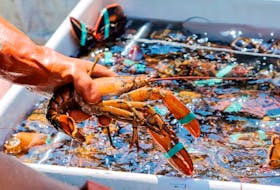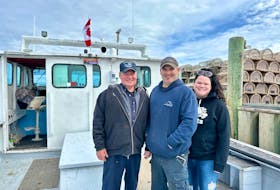
VANCOUVER – It's taken 23 years, but "Big Blue" finally has a permanent home.
The massive and fully restored skeleton of a blue whale that washed ashore in Prince Edward Island in 1987 is now on public display in Vancouver at the newly opened Beaty Biodiversity Museum.
The $50-million museum, located at the University of B.C., officially opened Saturday to showcase the university's collection of two million specimens of animals and plants.
But it's "Big Blue," as the whale's affectionately known by the small team of scientists who worked on the project, who is the star of the show.
"Some people come in and they get emotional, they tear up to see an animal so big ... It's a monument to biodiversity," said Andrew Trites, the project leader in restoring the blue whale's skeleton.
Believed to be the largest hung skeleton in a museum in the world, "Big Blue" occupies a two-storey glass atrium at the entrance of the building.
Measuring 26 metres long, about the length of two city buses, this is Canada's largest skeleton of a blue whale and one of only 23 such skeletons preserved on display in the world.
"And that goes back to the 1700s, when people first started to put these things on display," added Trites. The blue whale is the largest creature by weight ever known to exist on the planet, surpassing even the largest dinosaur.
There are only an estimated 7,000 in the world and it remains an endangered species, said Trites.
This particular whale was believed to have died by colliding with a ship, one of the biggest threats to whales. It was buried in P.E.I. after the carcass was discovered.
While an Ottawa museum acquired the rights to the deceased animal, the museum was not big enough to showcase a skeleton of this size.
So for two decades, "Big Blue" languished until UBC decided to pursue the rights to the whale.
In 2007, the university sent a team of four, including Trites and Mike de Roos, master skeleton articulator, to retrieve the bones.
For about two years, a team of about 15 sculptors, technicians, students and scientists worked to repair and reassemble the 500 bones.








